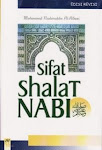Arabic (Islamic) Inscriptions
l. Anthropologists have proven that the Mandinkas under Mansa Musa's instructions explored many parts of North America via the Mississippi and other rivers systems. At Four Corners, Arizona, writings show that they even brought elephants from Africa to the area.
2. Columbus admitted in his papers that on Monday, October 21, 1492 CE while his ship was sailing near Gibara on the north-east coast of Cuba, he saw a mosque on the top of a beautiful mountain. The ruins of mosques and minarets with inscriptions of Qur'anic verses have been discovered in Cuba, Mexico, Texas and Nevada.
3. During his second voyage, Columbus was told by the Indians of Espanola (Haiti), that Black people had been to the island before his arrival. For proof they presented Columbus with the spears of these African Muslims. These weapons were tipped with a yellow metal that the Indians called Guanine, a word of West African derivation meaning ‘gold alloy.’ Oddly enough, it is related to the Arabic world ‘Ghinaa’ which means ‘Wealth.’ Columbus brought some Guanines back to Spain and had them tested. He learned that the metal was 18 parts gold (56.25 percent), six parts silver (18.75 percent and eight parts copper (25 percent), the same ratio as the metal produced in African metal shops of Guinea.
4. In 1498 CE, on his third voyage to the New World, Columbus landed in Trinidad. Later, he sighted the South American continent, where some of his crew went ashore and found natives using colorful handkerchiefs of symmetrically woven cotton. Columbus noticed the these handkerchiefs resembled the head dresses and loincloths of Guinea in their colors, style and function. He referred to them as Almayzars. Almayzar is an Arabic word for ‘wrapper,’ ‘cover,’ ‘apron’ and or ‘skirting,’ which was the cloth the Moors (Spanish or North African Muslims) imported from West Africa (Guinea) into Morocco, Spain and Portugal.
During this voyage, Columbus was surprised that the married women wore cotton panties (bragas) and he wondered where these natives learned their modesty. Hernando Cortez, Spanish conqueror, described the dress of the Indian women as long veils and the dress of Indian men as ‘breechcloth painted in the style of Moorish draperies.’ Ferdinand Columbus called the native cotton garments ‘breechclothes of the same design and cloth as the shawls worn by the Moorish women of Granada.’ Even the similarity of the children's hammocks to those found in North Africa was uncanny.
5. Dr. Barry Fell (Harvard University) introduced in his book Saga America - 1980 solid scientific evidence supporting the arrival, centuries before Columbus, of Muslims from North and West Africa. Dr. Fell discovered the existence of Muslim schools at Valley of Fire, Allan Springs, Logomarsino, Keyhole Canyon, Washoe and Hickison Summit Pass (Nevada), Mesa Verde (Colorado), Mimbres Valley (New Mexico) and Tipper Canoe (Indiana) dating back to 700-800 CE. Engraved on rocks in the old western US, he found texts, diagrams and charts representing the last surviving fragments of what was once a system of schools - at both an elementary and higher levels. The language of instruction was North African Arabic written with old Kufic Arabic script. The subjects of instruction included writing, reading, arithmetic, religion, history, geography, mathematics, astronomy and sea navigation.
The descendants of the Muslim visitors of North America are members of the present Iroquois, Algonquin, Anasazi, Hohokam and Olmec native people.
6. There are 565 names of places (villages, towns, cities, mountains, lakes, rivers, etc.) in USA (484) and Canada (81) which are derived from Islamic and Arabic roots. These places were originally named by the natives in pre-Columbian period. Some of these names carried holy meanings such as: Mecca (Indiana) - 720 inhabitants, Makkah Indian tribe (Washington), Medina (Idaho) - 2100, Medina (NY) - 8500, Medina and Hazen (North Dakota) - 1100 and 5000, respectively, Medina (Ohio) - 12,000, Medina (Tennessee) - 1100, Medina (Texas) - 26,000, Medina (Ontario) -1200, Mahomet (Illinois) - 3200, Mona (Utah) - 1100, Arva (Ontario) - 700, and many others. A careful study of the names of the native Indian tribes revealed that many names are derived from Arab and Islamic roots and origins, i.e. Anasazi, Apache, Arawak, Arikana, Chavin Cherokee, Cree, Hohokam, Hupa, Hopi, Makkah, Mahigan, Mohawk, Nazca, Zulu, Zuni, etc.













0 komentar:
Post a Comment